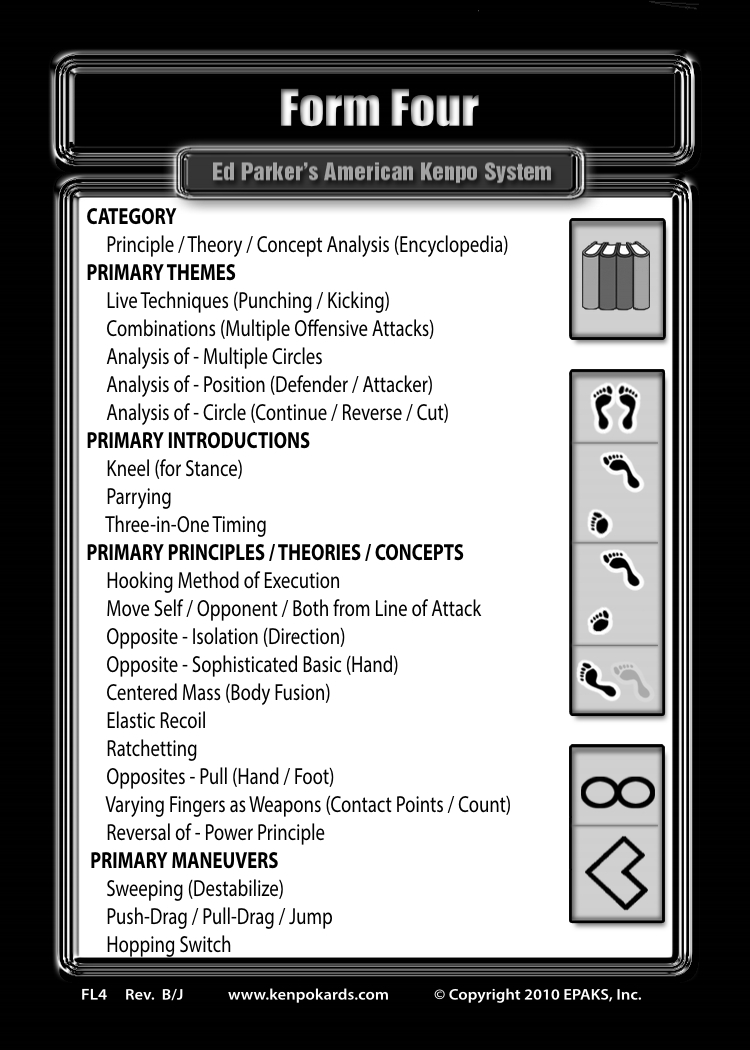
The back of the Kenpo Kard is essentially a short summary of the major elements contained in the form. It can also be construed as an extremely short version of this book. Its design is in some aspects similar to the front of the kard, but still significantly different.
Like the front of the kard, the back is divided into two main sections vertically - the top and the bottom. At the top is the name of the form. The name was purposely moved from the bottom to the top, to make it the first thing one reads on the kard. This, accompanied with the fact that it is isolated from the rest of the kard by a border, makes it the most distinguishable element of the kard. Below the name is the name of our art; less prominent, but still prominent.
The bottom portion of the kard is divided into two vertical columns - left and right. The left column is textually based and the right column is image based.
The Left Column
The left column lays out a quick overview of some of the major information presented within the form. Note, the word 'some'. This is important, because unlike a book, the kard has very limited space and therefore must compact and/or include only a variety of the most important information contained within the from. In short, it simply just doesn't have the room to present all of the important details. Therefore, a variety of critical information is presented from a spectrum of perspectives. In other words, variety and brevity over specificity.
The left column is broken down into different 'categories of information.' This design is intended to help the practitioner in absorbing and comprehending the information more categorically and in a highly targeted, yet broad, manner. Because the information is presented in this way, the practitioner can be presented with related information that is very concise and concentrated, thereby enabling a lot of information to be absorbed in a short period of time and in a small amount of space.
The Right Column
The right column has three (3) rows:
1)The top row illustrates the category of form. In this case, encyclopedic (in contrast to dictionary or appendix)
2)The middle row illustrates the theme stance(s) of the form. In this case, it also shows some of the other prominent stances of this form.
3)The bottom row lays out important patterns of the form. In this case, the intersecting circular motions (aka figure 8 pattern) and the 'skate' foot pattern.
A more comprehensive explanation of this information is contained within this book. The reader is highly encouraged to use this book in conjunction with the Kenpo Kards. Where the kards concentrate on a concise summary from a broad scope and targeted for training sessions, this book is more tailored to more a complete explanation, exploration and comprehension; but highly targeted toward a study environment.